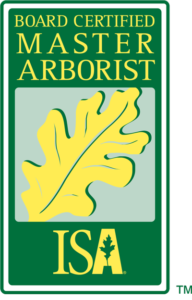Identifying and Treating Common Tree Diseases in Late Summer
As summer progresses and temperatures peak, trees can become susceptible to various diseases that threaten their health and vitality. Identifying and treating these diseases promptly is crucial for maintaining a healthy landscape. Here are some common tree diseases that appear in late summer, along with tips on how to identify and treat them.
1. Anthracnose: Anthracnose is a fungal disease that affects the leaves, stems, and fruits of trees, causing dark, sunken lesions.
- Identification: Look for irregular, water-soaked spots on leaves that turn dark brown or black. Infected leaves may drop prematurely.
- Treatment: Remove and dispose of infected leaves to reduce the spread of the fungus. Prune affected branches and apply a fungicide if necessary.
2. Powdery Mildew: Powdery mildew appears as a white or gray powdery coating on the leaves and stems of trees.
- Identification: Check for white, powdery spots on the upper surfaces of leaves. Infected leaves may become distorted and drop early.
- Treatment: Increase air circulation around the tree by pruning overcrowded branches. Apply a fungicide to control the spread of the disease.
3. Leaf Spot: Leaf spot diseases are caused by various fungi and bacteria, resulting in small, discolored spots on leaves.
- Identification: Look for circular or irregularly shaped spots on leaves, which may be brown, black, or yellow. Severe infections can cause premature leaf drop.
- Treatment: Remove and dispose of infected leaves. Apply a fungicide if the infection is severe and persists over multiple seasons.
4. Root Rot: Root rot is caused by soil-borne fungi that attack the roots of trees, leading to decay and decline.
- Identification: Check for yellowing leaves, wilting, and stunted growth. Infected roots may be black, mushy, and have a foul odor.
- Treatment: Improve soil drainage and avoid overwatering. Remove affected plants and apply a fungicide to the soil if necessary.
5. Fire Blight: Fire blight is a bacterial disease that affects fruit trees, causing blackened, wilted branches that resemble fire damage.
- Identification: Look for blackened, shriveled flowers, and twigs. Infected branches may have a “shepherd’s crook” appearance.
- Treatment: Prune and dispose of infected branches. Disinfect pruning tools between cuts to prevent the spread of the bacteria. Apply a bactericide if needed.
6. Verticillium Wilt: Verticillium wilt is a soil-borne fungal disease that causes wilting and yellowing of leaves, often affecting one side of the tree.
- Identification: Look for wilting and yellowing of leaves, often starting on one side of the tree. Cut into the affected branches to check for dark streaks in the wood.
- Treatment: Remove and destroy infected branches. Improve soil health with organic matter and consider planting resistant tree species.
Preventative Measures:
- Regular Inspections: Regularly inspect your trees for signs of disease. Early detection is key to effective treatment.
- Proper Watering: Avoid overwatering, as excess moisture can promote fungal growth. Water trees deeply but infrequently.
- Pruning: Prune trees to improve air circulation and remove infected or dead branches.
- Sanitation: Clean up fallen leaves and debris around trees to reduce the spread of fungal spores.
Conclusion: Identifying and treating common tree diseases in late summer is essential for maintaining the health and beauty of your landscape. By staying vigilant and taking prompt action, you can ensure your trees remain resilient and thriving.
Call to Action: Contact Action Tree Care for professional tree health assessments and treatment services. Our experts can help diagnose and manage tree diseases to keep your landscape in top shape.
Additional Resources: Read more about Our Tree Care Services. For more information on tree diseases and treatment, visit Arbor Day Foundation.


